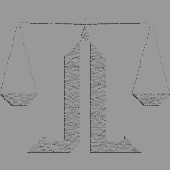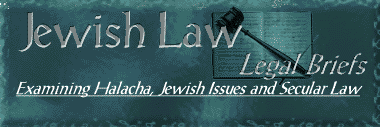

Supreme Court of the United States
No. 99-6723
IN THE
SUPREME COURT OF THE UNITED STATES
__________________________
ANTHONY BRADEN BRYAN,
Petitioner
v.
MICHAEL W. MOORE, SECRETARY,
FLORIDA DEPARTMENT
OF CORRECTIONS,
Respondent,
__________________________
ON WRIT OF CERTIORARI TO THE
SUPREME COURT OF FLORIDA
__________________________
BRIEF OF THE NATIONAL JEWISH COMMISSION ON LAW AND PUBLIC AFFAIRS ("COLPA") AND THE INTERNATIONAL ASSOCIATION OF JEWISH LAWYERS AND JURISTS (AMERICAN SECTION) ("IAJLJ") AS AMICI CURIAE IN SUPPORT OF PETITIONER
____________________
DENNIS RAPPS
NATIONAL JEWISH COMMISSION ON LAW AND PUBLIC AFFAIRS ("COLPA")
1290 Avenue of the Americas
New York, NY 10104
(212) 314-6384
ROBERT L. WEINBERG
INTERNATIONAL ASSOCIATION OF JEWISH LAWYERS AND JURISTS AMERICAN SECTION
("IAJLJ")
1640 Rhode Island Avenue, N.W.
Washington, D.C. 20036
(202) 775-0991
NATHAN LEWIN
(Counsel of Record)
ALYZA D. LEWIN
Miller, Cassidy, Larroca & Lewin, L.L.P.
2555 M Street, N.W.
Washington, D.C. 20037-1302
(202) 293-6400
Attorneys for the Amici Curiae
TABLE OF CONTENTS
TABLE OF AUTHORITIES
INTEREST OF THE AMICUS CURIAE
ARGUMENT
Introduction
- The Biblical Obligation To Be Sensitive to Fellow Human Beings Led the Rabbis To Prescribe the Least Painful and Least Disfiguring Means for Implementing the Four Forms of Execution
- Modern Application of Jewish Law Implements the Same Principles of Humanity and Consideration
CONCLUSION
APPENDIX
TABLE OF AUTHORITIES
CASES
State of Israel v. Tamir, 37(iii) P.D. 201 (Supreme Court of Israel, 1983)
BIBLICAL SOURCES
Exodus 17:4
Exodus 8:22
Leviticus 19:18
Leviticus 20:14
Leviticus 21:9
Numbers 14:10
TALMUDIC SOURCES
Talmud Bavli: Ketubot 37a
Talmud Bavli: Makkoth 7a
Talmud Bavli: Pesachim 75a
Talmud Bavli: Sanhedrin passim
OTHER AUTHORITIES
Menachem Elon, Ha-Mishpat Ha-Ivri (Magnes Press, The Hebrew University, Jerusalem, 1973)
Menachem Elon, Jewish Law: History, Sources, Principles, (Bernard Auerbach and Melvin J. Sykes trans., Jewish Publication Society, Philadelphia, 1994)
Menachem Elon, et al., Jewish Law (Mishpat Ivri): Cases and Materials (MB 1999).
Maimonides, Mishneh Torah, Book of Judges, Sanhedrin
INTEREST OF THE AMICI CURIAE1
The National Jewish Commission on Law and Public Affairs ("COLPA") is an organization of volunteer lawyers and social scientists that advocates the position of the Orthodox Jewish community on legal issues affecting religious rights and liberties in the United States. COLPA has filed numerous amicus curiae briefs in this Court on issues of concern to the Orthodox Jewish community.
The International Association of Jewish Lawyers and Jurists ("IAJLJ") is an organization whose membership is drawn from more than 30 countries. The Association was formed in 1969 in Jerusalem at the First International Congress of Jewish Lawyers and Jurists. Former Justice of the United States Supreme Court and United Nations Ambassador Arthur J. Goldberg was elected president. The American Section of the IAJLJ represents the American Jewish legal community, defending Jewish interests and human rights in the United States and abroad.
COLPA and IAJLJ are vitally interested in promoting the study of, and respect for, principles of Jewish Law as they have been applied throughout the history of the Jewish people. COLPA and the national groups that it routinely represents promote and encourage in-depth study of Talmudic texts. IAJLJ has sponsored public lectures in Jewish Law and promoted the publication of scholarly essays in the field of Jewish Law.
COLPA and IAJLJ are submitting this amicus curiae brief to advise the Court how questions concerning the mode of execution were resolved in the oldest and most venerable legal system known to man. The Jewish legal system – based on Biblical text, oral tradition, and rabbinic interpretation – considered and discussed the implementation of the death penalty. At first blush, the means prescribed by Jewish Law for the execution of an individual who is condemned to death by a duly authorized court seem cruel and insensitive to the pain and disfigurement that accompanies the death of the accused. But a close examination of the rabbinic interpretation of the Biblical text discloses that approximately 2000 years ago the rabbis of the Talmud agreed that execution must be carried out quickly and as painlessly as possible. They also agreed that an execution should not mutilate or disfigure the body of the condemned person. The relevant passages from the Talmud demonstrate that the rabbis sought -- with the scientific knowledge and means available to them in their time -- to formulate the quickest, least painful, and least disfiguring methods of execution that the technology of the day would allow within the framework of Biblical texts.
Guidelines consistent with those set forth by the rabbis of the Talmud appear to emerge, as well, from the language of this Court’s recent decisions relating to capital punishment. This amicus brief therefore supports the proposition that, separate and apart from the issue of capital punishment itself, a particular method of administering capital punishment that fails the standards of rapid and painless death and that results in mutilation or disfigurement should today be unacceptable under the evolving standards of human decency mandated by the Eighth Amendment.
This amicus brief describes the methods of execution prescribed by Jewish Law. The details of these methods (which may appear unusual to modern society) are described not for comparison with means of execution under contemporary standards. Our point is that the principles through which they were formulated can serve as a guide. It is clear that the rabbis sought to administer the most humane forms of capital punishment then available. These principles should be applied by this Court to evaluate whether execution by the electric chair, as administered in Florida, results in unnecessary pain and disfigurement. If electrocution, as currently administered, results in needless pain and mutilation, it would not meet the rationale of Jewish Law as administered 2000 years ago and should not be acceptable today under the evolving standards of the Eighth Amendment.
FOOTNOTE:
1. No party or party's counsel authored this brief in whole or in part, and no person or entity other than the amici curiae, their members, or their counsel, have made a monetary contribution to the preparation or submission of this brief. See Rule 37.6.
1 | 2
Page 1 of 2 |
